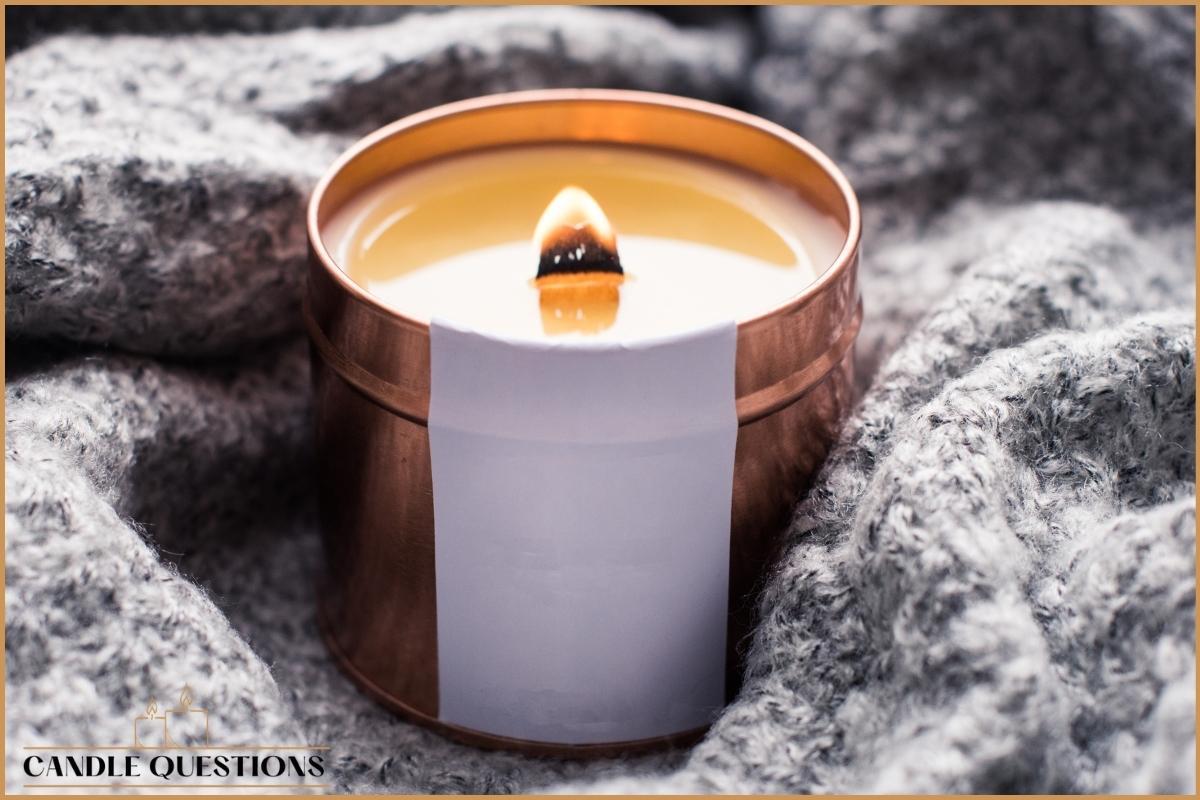Candles can flicker for various reasons, and it’s essential to understand why your candle is flickering to ensure a safe and enjoyable burning experience. Some common reasons for flickering candles include drafts, changes in air pressure, uneven wicks, and other environmental factors. To prevent flickering, keep your candle away from drafty locations and ensure the wick is centered and trimmed to the appropriate length.
Candlelight has been a source of illumination for centuries, and it can be incredibly calming and peaceful. However, when your candle starts to flicker, this can ruin the mood quickly.
Flickering candles are caused by several different environmental factors, such as drafty locations, changes in air pressure, or an uneven wick. In this article, we’ll dive into why these things cause candles to flicker and what you can do about it.
What You'll Learn
Drafty Locations
The flickering of the candle was so noticeable, I almost thought it had a mind of its own. As if it were alive and wanted to get my attention. Every now and then, the flame would flicker in an unnatural way that made me pause for a moment and wonder why this was happening. Was something else in the room influencing the behavior of this flame?
My first thought was that there must be some drafty windows or doors somewhere nearby. The fan speed could also have been too high which created a breeze around the area where the candle resided. Of course, I decided to investigate further as I continued to ponder what could possibly be causing such unusual activity with this small source of light.
I started by checking all corners of the room looking for any openings that may have caused air flow but nothing seemed out of place at first glance.
After much searching, however, I eventually noticed a tiny crack near one corner of the window frame—just big enough for air to pass through creating a mini-breeze just strong enough to cause my once still candle flame to dance about wildly with no end in sight…
Changes In Air Pressure
Changes in air pressure can also cause candles to flicker. This is due to the way that air currents and alternate fuels interact with a candle’s flame. When air pressure changes, it affects both these elements, causing fluctuations in the flame size which result in flickering.
Air currents are impacted by variations in pressure.
Alternate fuels, such as oxygen and methane, are affected by changes in the environment.
These factors combine to create instability for a candle’s flame.
Therefore, when the atmosphere shifts—due to weather patterns or other forces—it causes alterations in wind speed and turbulence around a lit wick. As a result, this can destabilize your candle’s flame and lead to an unsteady burn pattern including regular flickering of the light source.
To minimize this effect, you should always be aware of environmental conditions before lighting up any kind of fuel-based illumination device like a candle.
Transitioning into the subsequent section about ‘uneven wicks’, one factor that contributes to flickering flames is when there are inconsistencies within the actual structure of the wick itself.
Uneven Wicks
Let’s start by checking for uneven wicks – that could be why our candle’s flickering.
Once we’ve identified any lopsided wicks, we can figure out how to fix ’em.
Checking For Uneven Wicks
If you’ve ever wondered why your candle is flickering, it could be an uneven wick!
Check the flame size and size of the wick to see if there’s a difference.
If one side of the flame appears larger than the other or the wick looks thicker on one end, that can cause your candle to flicker.
Make sure both sides are even by trimming off any excess with scissors or a lighter so that your candle burns smoothly without interruption.
That way, you’ll get to enjoy its warm glow for longer!
Correcting Uneven Wicks
Now that you know why your candle is flickering, it’s time to fix the issue.
To do this, you’ll need to check the wick hardness and sooting issue.
If the wick is too hard or there are signs of soot buildup on one side, then trim off any excess with scissors or a lighter until both sides appear even.
That should help ensure that your flame burns smoothly without any further interruptions!
Improper Storage
Uneven wicks can be a major cause of flickering candles, as can improper storage. If you aren’t careful when storing your candles, it could lead to the flame not burning properly. Improper storage usually means that there isn’t enough proper ventilation and air circulation for the candle. This lack of airflow will impact how well the candle burns and potentially lead to an uneven wick or even extinguished flames.
Additionally, if your wax temperature is too high, it may prevent the flame from staying lit due to liquid wax dripping down onto the wick before it has had time to burn off completely. To avoid this issue, make sure you keep your candles in a cool place with plenty of air circulation so that they can burn evenly without any interruption.
Another factor which might contribute to flickering flames is the type of fuel used for your candle. Natural beeswax and soy-based waxes tend to have a lower melting point than paraffin-based waxes and therefore require less heat for them to melt fully. As such, these types of fuels are better suited for extended use in drafty locations since they won’t easily extinguish themselves due to low temperatures or drafts from open windows or doors.
Furthermore, using natural beeswax will create a clean burning flame which shouldn’t flicker nearly as much as other fuels would in more windy conditions. It’s important to remember that all candles need some sort of ventilation while they’re burning; otherwise their flames can become unstable because of changing atmospheric pressure levels or insufficient oxygen supply.
Keeping your candles away from direct sources of wind like ceiling fans or vents will help ensure that their flames remain steady and don’t flicker unexpectedly. Wax temperature also needs to be monitored closely in order to ensure consistent burning throughout its life cycle – too hot and you’ll get pooled liquid wax dripping down on top of the wick before it has been burned off entirely; too cold and the flame might struggle to stay lit at all!
Taking these precautions into consideration should allow you achieve optimal performance from every one of your candles regardless of where you choose to light them up! Moving forward, we must consider another critical element related to candle safety: wax temperature.
Wax Temperature
Back in the days, when fire was a man’s best friend and candles were used to light up rooms rather than set the mood, it was important to ensure that your candle never flickered.
The reason behind why one’s flame could flicker lies with wax temperature – an ever-important factor in maintaining a stable burning rate and flame size.
The higher the wax temperature, the faster the wax will melt which in turn increases the candle’s burning rate. Conversely, if the wax is too cold then not enough of it can be released for combustion resulting in small flames or flickering lights.
Therefore, ensuring you maintain a consistent wax temperature during use helps to reduce any unwanted fluctuations and keeps your candle lit!
It doesn’t end there though; having an improperly trimmed wick also affects how much heat can be produced from a given amount of fuel leading to inconsistent results when lighting up your space.
Improperly Trimmed Wick
One of the common culprits behind a flickering candle is an improperly trimmed wick. The flame must be kept at an appropriate size in order to burn steadily, and trimming a too-long wick can help achieve this goal.
To properly trim your wick, you should wait for it to cool down before using scissors or a specially designed wick trimmer to cut the blackened end off. It’s best to keep your wicks between 1/4 inch and 1/2 inch long: any shorter than that will result in wax dipping around the wick and any longer can cause bigger flames which could lead to soot build up on both the vessel and its surroundings.
These are just some considerations when it comes to keeping your candles burning safely. Ensure proper ventilation when lighting them, use high quality waxes with low melting points, avoid drafts, and make sure you’re regularly maintaining your candle by monitoring the proportions of wax levels compared to wick lengths.
With these tips in mind, you’ll be able to enjoy your scented ambience without interruption!
Conclusion
The flickering of a candle can be mysterious and beautiful, but it’s important to understand why it happens.
Drafty locations, changes in air pressure, uneven wicks, improper storage, wax temperature, and an untrimmed wick are all possible causes.
By taking the time to investigate what might be causing your candle’s flicker, you will find that the problem is usually quite simple to fix – so no need for concern!
Once resolved, enjoy the calming light and mesmerizing flame as they dance around without any interruptions.

